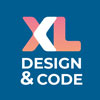
Car Vehicle Sales Website Design: Crafting an Effective Platform
In today’s digital age, having a strong online presence is essential for businesses in the automotive industry, particularly for car dealerships and vehicle sales businesses. A well-designed website can serve as a powerful marketing tool, helping you attract potential customers, showcase your inventory, and ultimately drive sales. In this article, we’ll explore the key elements of effective car vehicle sales website design and provide tips for creating a platform that stands out in a competitive market.
Understanding Your Audience
Before you start designing your car vehicle sales website, it’s essential to understand your target audience and their needs. Consider the demographics, preferences, and behaviors of your potential customers, including factors such as age, income level, location, and vehicle preferences. Use this information to tailor your website design and content to resonate with your target audience and address their specific needs and pain points.
Creating a User-Friendly Experience
User experience (UX) is critical for the success of any website, especially for car vehicle sales platforms. Aim to create a user-friendly experience that makes it easy for visitors to navigate your website, search for vehicles, and find the information they need. Use intuitive navigation menus, clear calls-to-action (CTAs), and search functionality to help users find what they’re looking for quickly and efficiently. Consider implementing filters and sorting options to allow users to refine their search results based on criteria such as make, model, price, and mileage.
Highlighting Your Inventory
Your inventory is the heart of your car vehicle sales website, so it’s crucial to showcase it effectively. Use high-quality images and detailed descriptions to highlight each vehicle in your inventory, including key features, specifications, and pricing information. Consider including multiple photos of each vehicle from different angles, both interior and exterior, to give users a comprehensive view of the vehicle. Use a responsive design to ensure that your inventory looks great and functions seamlessly across desktop, mobile, and tablet devices.
Offering Online Tools and Resources
Provide visitors with useful online tools and resources to enhance their browsing experience and facilitate their decision-making process. Consider including features such as finance calculators, trade-in valuation tools, and vehicle history reports to help users make informed decisions about their purchase. You could also offer virtual test drives, 360-degree interior views, or video walkarounds to give users a more immersive experience and build confidence in your inventory.
Building Trust and Credibility
Building trust and credibility is essential for any car vehicle sales business, particularly in an online environment where customers may be wary of scams or fraud. Take steps to reassure visitors and build trust in your brand by providing transparent pricing information, detailed vehicle histories, and customer testimonials and reviews. Consider displaying trust badges, security seals, and industry certifications to demonstrate your commitment to customer satisfaction and data security.
Optimizing for Search Engines
Search engine optimization (SEO) is critical for driving organic traffic to your car vehicle sales website and improving your visibility in search engine results pages (SERPs). Optimize your website for relevant keywords, including vehicle makes, models, and features, as well as location-specific terms such as city names and zip codes. Create unique, informative content for your website, including vehicle descriptions, blog posts, and landing pages, to attract and engage users and improve your search rankings.
Providing Excellent Customer Support
Excellent customer support is key to ensuring a positive experience for visitors to your car vehicle sales website. Provide multiple contact options, including phone, email, and live chat, to make it easy for users to get in touch with you with questions or inquiries. Respond promptly to customer inquiries and provide helpful, informative answers to build trust and confidence in your brand. Consider offering online appointment scheduling or test drive bookings to streamline the sales process and make it easier for customers to take the next step.
Conclusion
Designing an effective car vehicle sales website requires careful planning, attention to detail, and a focus on providing a positive user experience. By understanding your audience, creating a user-friendly experience, highlighting your inventory, offering online tools and resources, building trust and credibility, optimizing for search engines, and providing excellent customer support, you can create a website that attracts visitors, converts leads, and drives sales. Remember that your website is often the first impression that potential customers will have of your business, so invest the time and resources needed to make it stand out in a competitive market.
